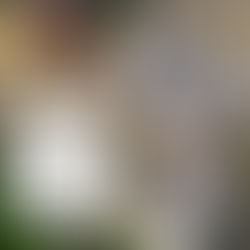Color Theory 101
There is more than a semester's worth of information that goes into Color Theory, too much to touch on in a single post. I'm going to give you some very basic information and then explain how to apply it to your space. When I mention color, it refers to any of the following: a true hue (red), a tone (muted red), a shade (burgundy) or a tint (pink). Below are 6 types of color schemes with examples.
Monochromatic: Variations of a single color. While at first it might seem the easiest of the color schemes, it takes much more finesse to prevent it from feeling cold and sterile. If you're doing an all white kitchen, you want to think about variations in texture and bringing in neutrals. In the example here, the counter and backsplash have a neutral veining that adds visual texture. The metals in the lighting and hardware bring sparkle to break up the flatness of the cabinetry. The wood floor, table top and cutting board all bring in a warm neutral that keeps the space from feeling like a hospital corridor.
Analogous: Three colors that are next to each other on the color wheel. Think of the variations of a sunset with it's yellows and oranges or a succulent with it's variations of blues and greens. One color needs to be the primary as in this example with it's dark blue walls and blue sofa. The green and blue-greens are the supporting colors in the pillows and the rug.
Complementary: Colors directly opposite on the color wheel. In this case the lilac, a shade of purple (walls) with mustard yellow (chairs). The mixture of warm and cool tones makes for a dynamic visual.
Split complementary: Color on one side of the wheel and the 2 adjacent to it's complement on the other side. For this bathroom, it's the fuchsia accents with the yellow-green and green-blue. Again, in this scheme, you'll notice that the fuchsia is the supporting color whereas the green tones are the primary color. You could easily swap this out with the fuchsia being the primary wall color and the stool, towels and art being the yellow-green and green-blue.
Triadic: Three colors that are equally spaced around the color wheel. While this interior might feel haphazard to you, if you look closely at the wallpaper, you'll see all of the colors represented. Finding a wallpaper, fabric, piece of art or any object that has multiple colors is an easy starting point for selecting colors. Once you pull the colors, you can see which of the color schemes it fits into.
Tetradic or Square: Using a pair of complementary colors. This example uses strong colors, but the same colors can become muted and still have the same balance within the space.
After my divorce, I painted my home office in SW 0032 Needlepoint Navy above white beadboard and had a denim sofa, which was a Monochromatic color scheme, with a few tiny accents of it's complement, orange. I recently pulled up the linoleum floor, refinished the original, 1924 wood subfloor and painted the walls above the beadboard in Sherwin Williams SW6222 Riverway. I selected this floor cloth, on the right, which brings in Green, Green-Blue and Blue, changing my color scheme to Analogous. I'm currently selecting the fabrics to recover my sofa and desk chair seat cushion and will pull from the colors in the rug to do so. I'm considering an acid green indoor/outdoor velvet for the sofa and to bring in some more neutral, an animal print for the desk chair. If you have Canva, there is a tool that can help you generate the 6 types of schemes based on a favorite color.
If you want help selecting a color scheme for your space, I would love to set up a personalized interior design consultation to discuss your needs. Please contact me at info@the-silver-lining.com or view my services online.

Learn more tips in my free Interior Design eBook here
Always look for the Silver Lining





























Comments